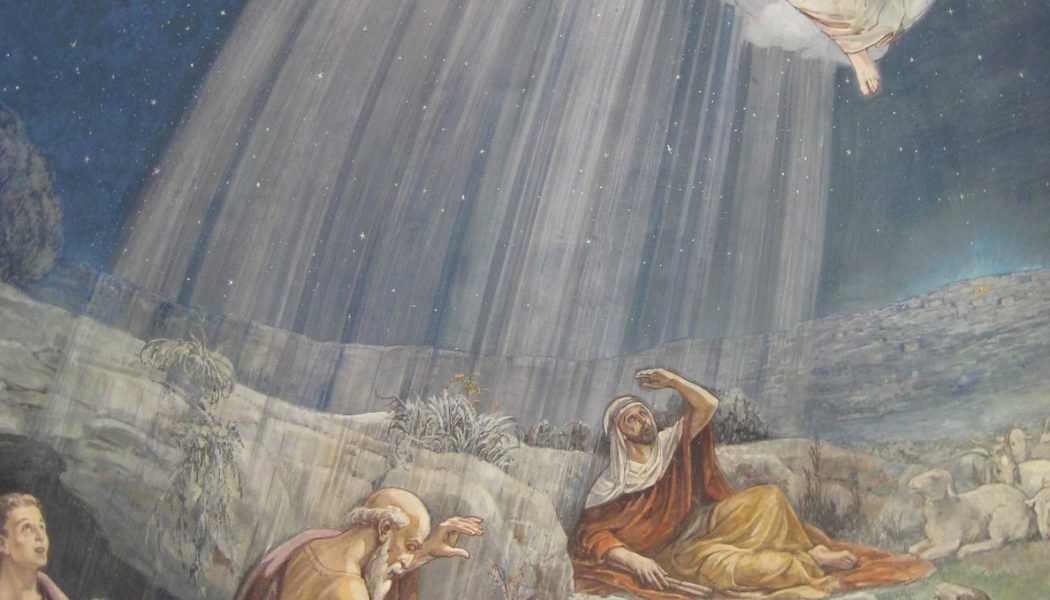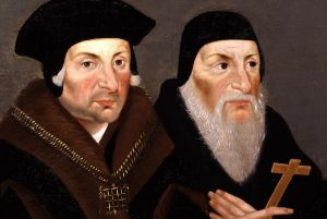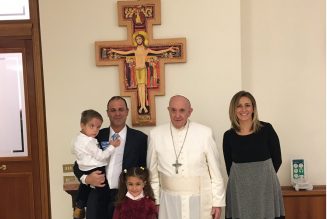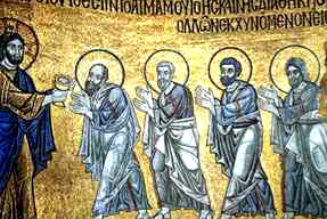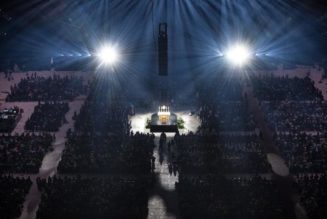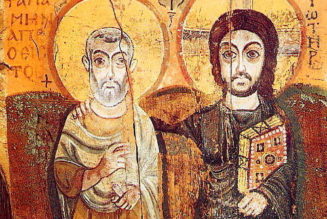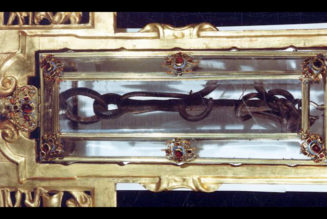
First, what do I mean by “Christmas Clutter”. I don’t mean the boxes of unwanted presents, extra Christmas lights that don’t work, abandoned wrapping paper, leftover food or your tree that’s dropping its needles.
I’m talking about all the stuff that has accumulated around the simple stories of Christmas as recorded in the gospels. Christmas is cluttered up with everything from Frosty the Snowman to Rudolph, Santa Claus and his elves and much much more. In fact, the nativity stories began to be elaborated and exaggerated from the very beginning. The Protoevangelium of James and the writings of Justin Martyr show fantastical elements entering the story from the early second century. In my book The Mystery of the Magi I explain how the Magi story especially began to be cluttered up with all sorts of extra magical and mystical elements. This blog post explains more of what I mean.
The fact of the matter is, even the account in Luke and Matthew must be rather late in the development of the tradition because the gospels were written “backwards”. In other words, after Jesus’ death and resurrection it took some time for the early church to really come to the full realization of who he was. Until then he was a simple Galilean prophet and preacher and wonder worker. After his resurrection they pondered who he truly was and what his mission really was, and as the Holy Spirit led them into all truth about Jesus’ true identity they then began to wonder about his birth. The stories of his birth were discovered and recorded, so although they come at the beginning of the gospels, they must have been some of the last content to have been recorded. I’m of the opinion that some of the details of the infancy narratives, by that time, may very well have been remembered and passed on in a rather more mystical and miraculous manner than actually happened.
I am NOT proposing that the stories were made up out of whole cloth. I am NOT even saying that the mystical and magical elements were added to give the stories added wonder. However, I am saying that the incidents that took place were remembered and passed down in such a way that the mystical and miraculous elements (which really happened) were remembered and recorded in a more marvelous manner.
Let me give you an example. I went to Medjugorje on pilgrimage with some friends in the early 1980s. The visionaries were still young teenagers at the time. It was a marvelous experience. We saw the sun spin, rosaries turned to gold, conversions took place, I even got to celebrate Mass in the room in St James’ church where the apparitions took place. When I relate what really happened the story sounds more mystical and marvelous than it actually was. We did see the sun spin, and my the metal chain of the rosary I bought there did turn a gold or bronze color on my return home. But in re-telling the story one might imagine that the spinning sun was on the order of the miracle at Fatima and the whole rosary turned into solid gold.
That is not how it happened. The sun spinning was remarkable, but it didn’t seem that amazing at the time. Likewise, the chain of the rosary turned a gold color–the whole rosary did not turn into solid gold. You see my point. Real events can be told in such a way that in the transmission of the story it becomes more marvelous and magical and mystical than it actually was in real life. However that is not to say that something miraculous did not happen–just that in the story telling it seems more amazing.
So when we read, for example about the Star of Bethlehem it sounds magical and mystical, but it may have been as ordinary as the conjunction that appeared our skies this week, but the magi interpreted it as an astrological sign. It may have guided them on a long journey across the desert sands from India, Africa and Persia, but Matthew doesn’t say that and we know these are legends that accumulated in Gnostic writings from the sixth century and beyond.
Let us take another example of the angels singing in the night sky to the shepherds. Our vision of this story is colored by countless works of art, Christmas cards, Bible story books etc over the years. However, St Luke does not actually say the angels appeared in the sky. He says an angel appeared to them, then” there was with the angel a multitude of heavenly hosts praising God and saying…” He doesn’t say they saw lots of angels in the clouds. It could very well be that there was a bright light and they heard angel voices. The actual apparition may have been very different than all the medieval paintings and Christmas cards of pretty angels floating in the sky.
Those who doubt the miraculous elements of the Christmas stories are invariably doubting and dismissing the mythical, magical elements that have been imposed on the story through countless ages of tradition. They are dismissing what I call the “Christmas clutter.” It is possible to re-read the accounts in Luke and Matthew with an eye to clearing out the Christmas clutter. To do this one needs to set aside all the pre conceived ideas about the Christmas story that have accumulated in our imaginations and read the text simply for what it says and not read into it all the other stuff we have added through centuries of interpretation, customs and traditions.
We should also read the miraculous elements of the story with an eye on other similar phenomenon down through history both in the Bible and elsewhere. So when we read of the angels appearing to the Blessed Virgin, St Joseph, Zachariah, the shepherds and the Magi we weigh up the many stories of people from many cultures and from many different time periods who have reported in many different ways their encounters with angels. While it is easy to dismiss the Christmas card pictures, we need not necessarily dismiss the encounters with angels completely. Such things are reported in many ways to many people. We should ask what these different kinds of apparitions of angels mean. How do they occur and why are they so prevalent in human society.
We therefore avoid, on the one hand credulous superstition and naive fundamentalism, but we also, on the other hand, avoid the cynical, modernist view that dismisses the supernatural altogether. This is actually the response we are supposed to have when considering the reported occurrence of the supernatural. When Aunt Mildred says she saw the ghost of her poor departed tabby cat Mittens, we treat her report with serious consideration, but we also look first for every natural explanation. Aunt Mildred may have seen the ghost of Mittens but it is more likely that she was dreaming. Even this doesn’t rule out an appearance of Mittens–maybe that’s how the ghost of Mittens chose to appear–in a dream.
When faced with the Christmas clutter therefore we examine it, and like that box of old wrapping paper–decide what is worth keeping and what we ought to throw out.
Join Our Telegram Group : Salvation & Prosperity
